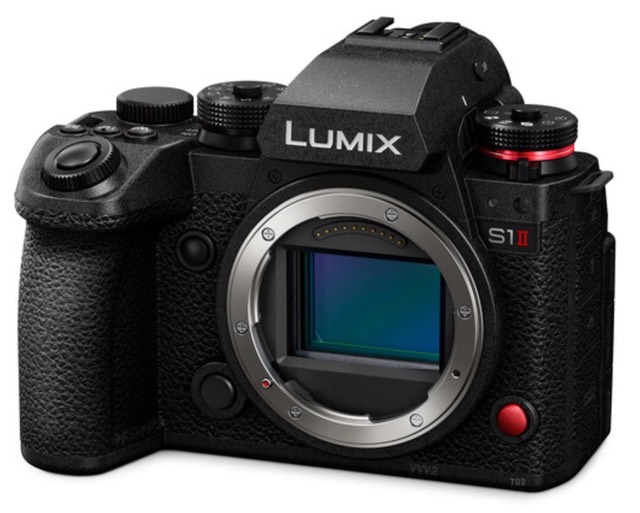Yes, I know I'm behind the other Web sites on this news, but I don't have direct access to Panasonic any more, and it's taken a couple of days for me to verify a few things and fully wrap my head around the two new models.

I've listed the original S1 and S1H as "older models" pretty much since the S5II appeared on the scene. They've been out of stock here in the US for quite some time. Now we have two new S1's, the S1II and the S1IIE. These new models are built on the same body size/style/controls as the original S1 models, but have some wrinkles inside (and a slightly different tilt/articulating LCD on the back).
The first problem everyone is going to have is that Panasonic isn't being consistent with naming policies across their line. In the original S1 pairing, the S1 was the base model and the S1H was the more video-centric. Now, the S1II is the more video-centric, and the added-letter S1IIE (E is apparently for Essential) is the more base model. The differences between the models are subtle, but important. The S1II uses a new 24mp stacked image sensor, while the S1E uses the older 24mp image sensor, which drives the performance differences.
One question I was trying to get answered is whether the S1II's stacked sensor was the same as the Nikon Z6III's. I believe it is, at least to a point. It appears that Panasonic is accessing it differently than Nikon does, and that could be because of small changes to the frame offload speeds, or it could be that Panasonic is just using different modes that were already built into that sensor. This difference shows up at 4K/120P, for example, where Panasonic is using a 1.17x crop and Nikon a 1.5x crop. There are differences in how the captured data maps to pixels as well as rolling shutter (the Nikon produces direct pixels and has a faster rolling shutter).
Little differences like this are important, because we have quite a few choices at 24mp full frame mirrorless now (including six from Panasonic!). The S1II seems to go up against the Nikon Z6III, but the S1II is US$3200 and the Z6III is US$2500 (often on sale at an even lower price). It's tough for Panasonic to make inroads against the big three here in the US, and specs, dealers, and price are now all issues Panasonic is fighting.
Nowhere in Panasonic's press releases or marketing information I've seen so far do they actually seem to know how to market their six different 24mp cameras (S1II, S1IIE, S5II, S5IIX, S9, and BS1H). In the S1IIE features list the sensor is listed as "inspired by the performance characteristics of the Lumix S5II," which tells you nothing. Those of us in the press these days are dealing with AI driven press releases, but I'm failing to even see the I in Panasonic's. Nothing tells me which 24mp camera to buy, let alone why I should buy it instead of Canon's, Nikon's, or Sony's. Update: Panasonic France has published an Instagram post that tells you which one to buy based upon your Zodiac sign (no, I'm not making that up). This feels like "stuff the channel and see if it sells" product management, not clear, user centric marketing.
I'm also going to once again call out Panasonic on a continued flaw in their strategy: Canon, Nikon, and Sony now all have a full line of still cameras that are video hybrids, as well as dedicated video cameras, both of which use the same mount. Canon has standardized on RF, Nikon/RED on Z, and Sony on FE. Panasonic's dedicated professional video line is still a strange mix of EF, B4, PL, the L box camera, and camcorder (built-in lens).
Maybe someone from Panasonic's US team will reach out to me and try to fully describe their "vision" here. After all, I live a short drive away from their HQ. But I suspect not, because I'm not sure they know.
